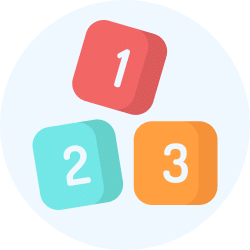Class 1 Exam > Class 1 Notes > Mathematics for Class 1 > Chapter Notes: Patterns
Patterns Class 1 Notes Maths Chapter 10
| Table of contents |

|
| How to make Patterns? |

|
| Colour and complete the patterns. |

|
| Extend the Sequences |

|
| Observe and continue the patterns. |

|
| Number Patterns |

|
| Learning Outcomes |

|
How to make Patterns?
To make patterns, we repeat what has come before.

Colour and complete the patterns.
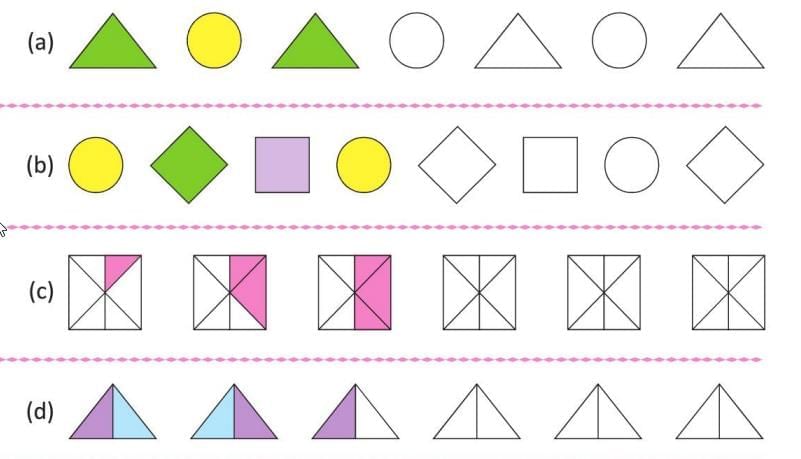
Extend the Sequences
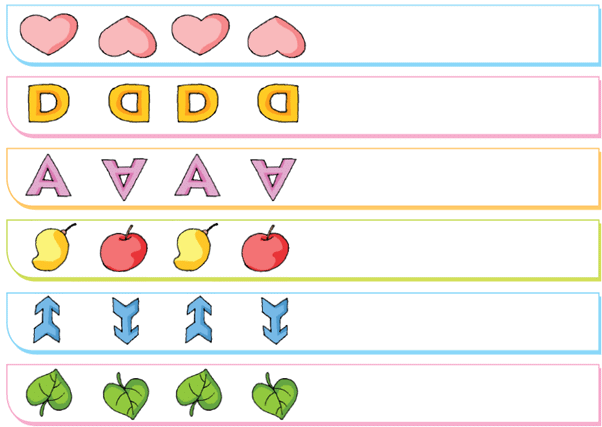

Observe and continue the patterns.
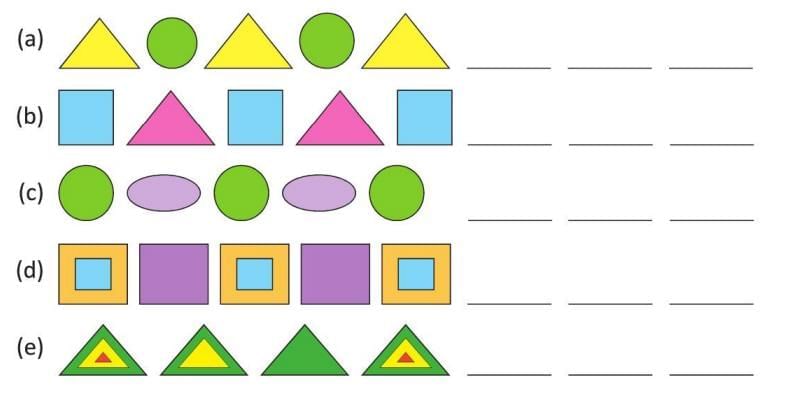
Number Patterns
Study the pattern and fill in the missing numbers.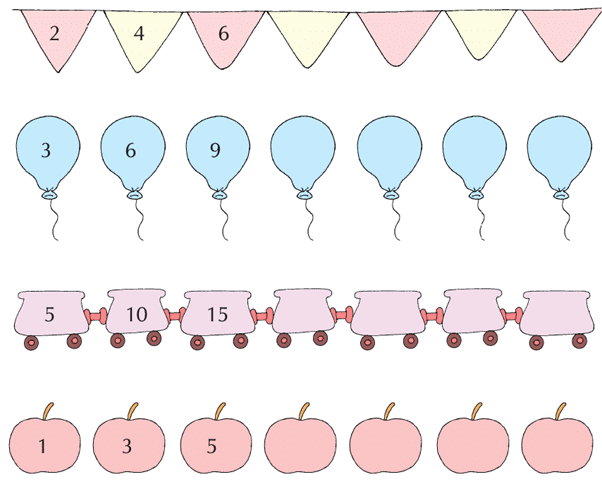
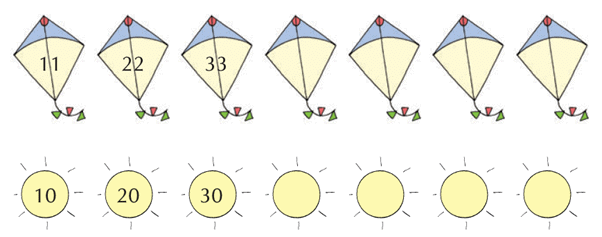
Learning Outcomes
Students will be able to learn:
- to observe and extend patterns of shapes and numbers.
- to create patterns with shapes and numbers.
The document Patterns Class 1 Notes Maths Chapter 10 is a part of the Class 1 Course Mathematics for Class 1.
All you need of Class 1 at this link: Class 1
|
16 videos|135 docs|23 tests
|
FAQs on Patterns Class 1 Notes Maths Chapter 10
| 1. How do you complete a number sequence? |  |
Ans. To complete a number sequence, you need to identify the pattern or rule that governs the sequence. Once you have identified the pattern, you can use it to find the missing numbers and complete the sequence.
| 2. What are some common number patterns? |  |
Ans. Some common number patterns include arithmetic sequences, geometric sequences, and Fibonacci sequences. In an arithmetic sequence, each term is obtained by adding a constant difference to the previous term. In a geometric sequence, each term is obtained by multiplying the previous term by a constant ratio. Fibonacci sequence is a series of numbers in which each number is the sum of the two preceding ones.
| 3. How can I identify a pattern in a sequence? |  |
Ans. To identify a pattern in a sequence, you can look for recurring differences or ratios between the terms. By examining the differences or ratios, you can determine if the sequence follows an arithmetic or geometric pattern. Additionally, you can observe the position of the terms in the sequence to identify other types of patterns, such as triangular numbers or square numbers.
| 4. How do you repeat a pattern? |  |
Ans. To repeat a pattern, you need to understand the pattern's structure and replicate it accordingly. If the pattern involves a sequence of numbers or shapes, you can repeat the sequence in the same order. If the pattern involves a specific arrangement or combination of elements, you can replicate that arrangement in subsequent repetitions.
| 5. Why are number patterns important? |  |
Ans. Number patterns are important because they help develop critical thinking skills, problem-solving abilities, and logical reasoning. Recognizing and understanding patterns can also improve mathematical fluency and support the understanding of more complex mathematical concepts. In various fields, such as computer science and cryptography, number patterns are used to solve problems and create efficient algorithms.
Related Searches



